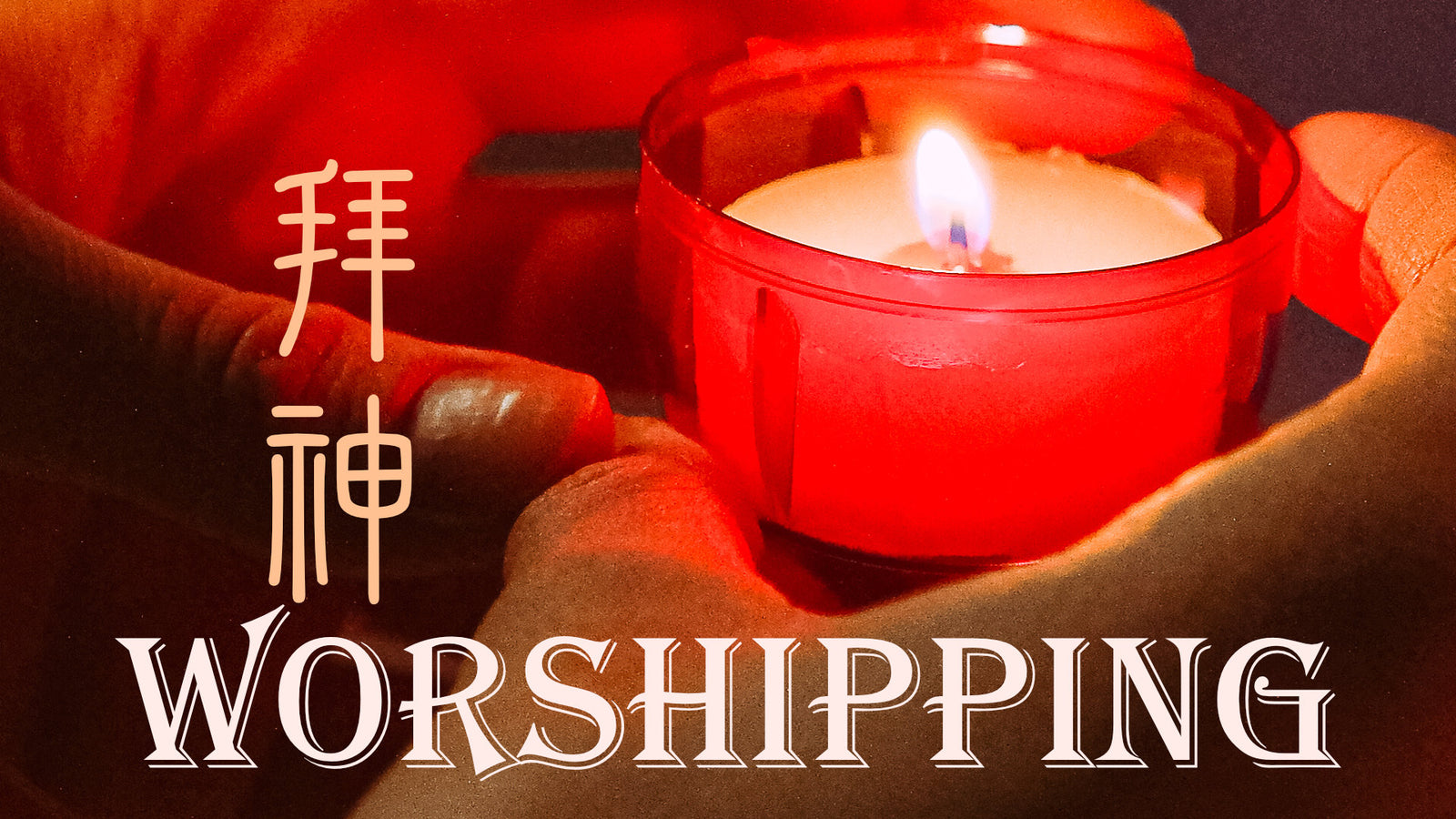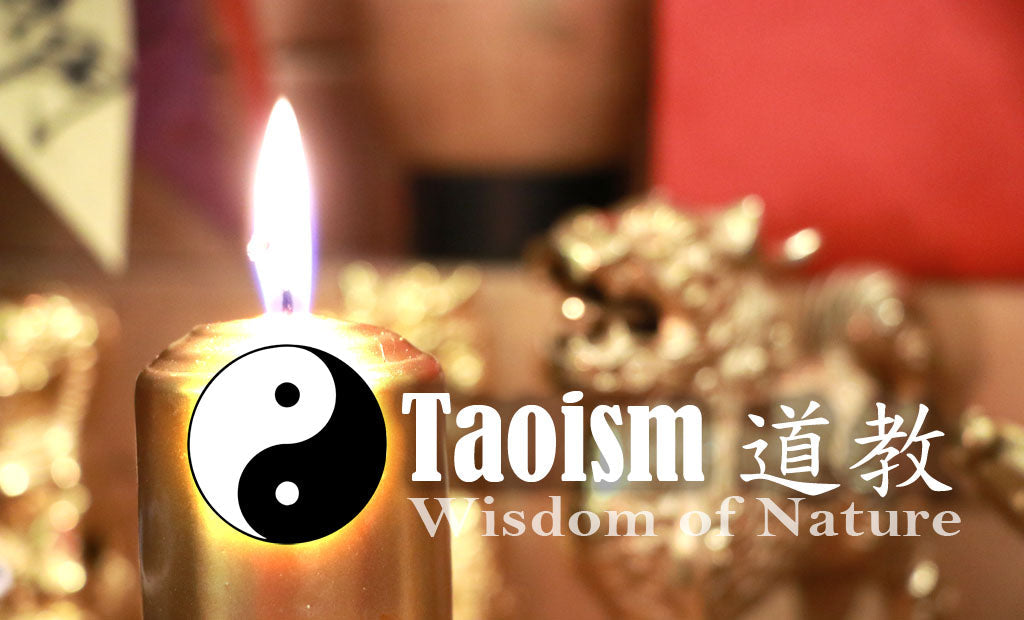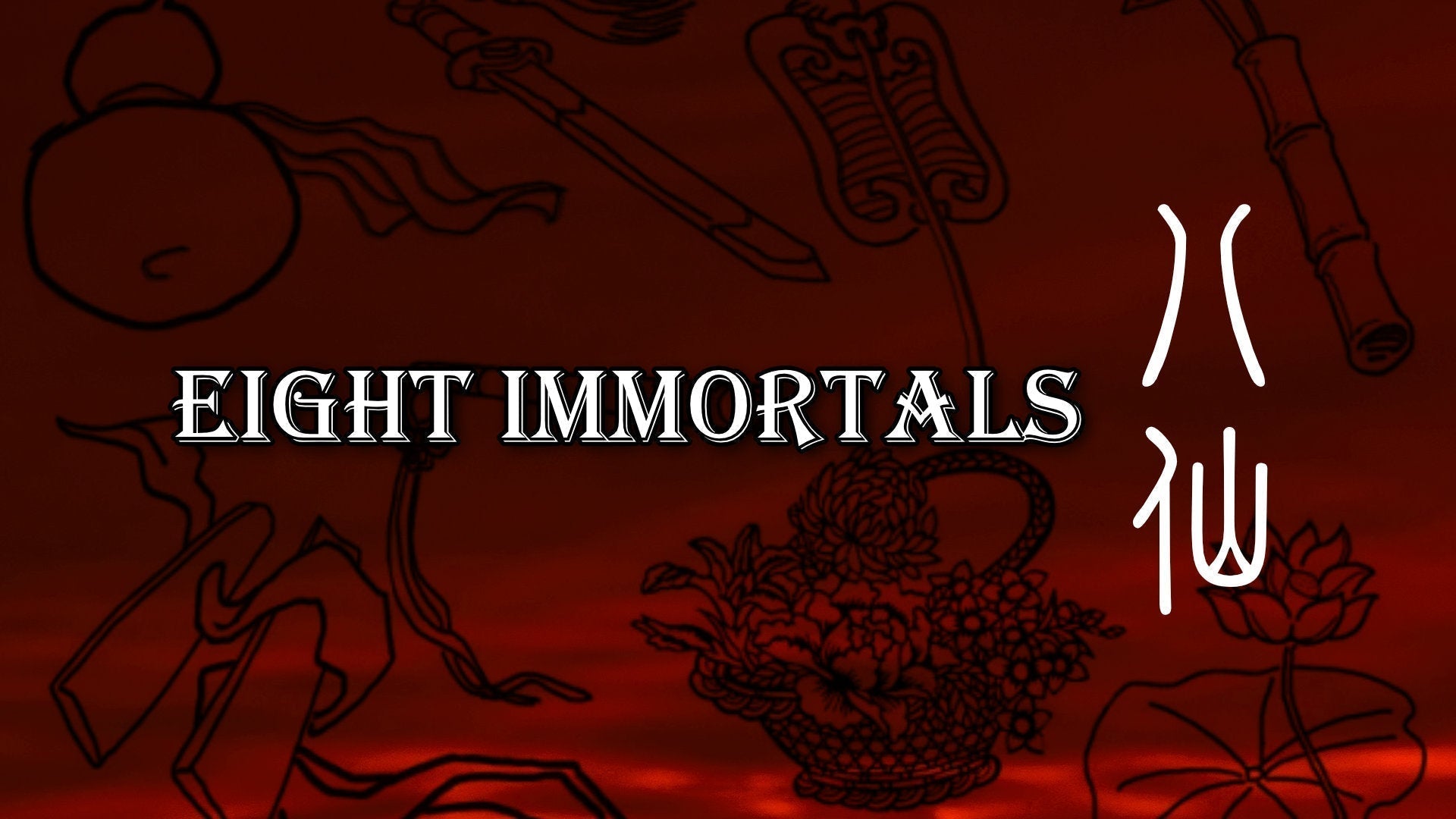
Worshiping, Baai Sun 拜神 (Saamlawnese: Bye Sin), is a common practice in many religious paths, often demonstrated through prayers and offerings to gods and deities. However, what does this practice entail and how does it function? After reading the enlightening and thought-provoking article on "What is God," this next installment in the series aims to provide further clarity. If you haven't yet read the previous article, I highly recommend doing so before delving deeper into this one, as it serves as Episode 2 of the series!
The act of worshiping, or Baai 拜, extends beyond its association with gods. In ancient times, rulers would perform similar acts of worship to honor their generals when assigning them special titles or tasks. For instance, the ruler would engage in worship to express their faith in the general's abilities and success in the given mission. However, it's crucial to note that the act of Baai 拜 doesn't imply that the general becomes a deity on the altar. Instead, it signifies the act of wholeheartedly entrusting oneself to another person through faith. In essence, it means that you believe in their capabilities unconditionally, without requiring them to prove themselves. Being worshipped in this manner is considered a tremendous honor because it demonstrates that someone has placed their complete trust and faith in you, even without explicit displays of your worthiness.
Trust and Faith
In our lineage, we have established distinct definitions for trust and faith. Trust is a form of belief that is built upon witnessed evidence. For instance, you trust a bank because it has demonstrated consistent performance over time and possesses various indicators of reliability. It is based on tangible proof that instills confidence in its stability. On the other hand, faith is a belief that transcends the need for evidence. It is the act of placing trust in something or someone without relying on prior experience or observable facts. For instance, you may have never left your child alone at home before, but you have faith that they will behave responsibly and handle the situation well.
When it comes to true love, faith plays a paramount role right from the beginning. Since it is impossible to predict the future or test the waters before entering into a relationship, true love requires an unwavering belief in the potential of the connection. There is no "let's try" mentality involved, as that would already indicate a departure from the realm of true love. Instead, the relationship is built on faith, which sets it apart from a transactional or business-like arrangement. Faith serves as the driving force that motivates individuals to fulfill their promises and invest their hearts wholeheartedly.
In this context, faith can be seen as an investment in someone—a heartfelt investment that goes beyond mere transactions. Trust, on the other hand, does not function as an investment since it is based on something observed and "purchased." Trust operates more as an exchange, where goods or services are acquired in return for a demonstrated reliability.
Worshipping Gods
The methods of worshiping gods may vary, but the underlying concept remains consistent: to invest one's heart's energy into the deity through faith. It's understandable to question how we can gauge whether we are worshiping correctly and how to measure the energy being invested, considering that faith and heart are not physical entities.
Let's imagine nature as a game where each passing second is recorded in the system, creating a data page of the game's history. In this context, physical actions hold significance, rather than mere thoughts or emotions. When you are faithful to someone, it is essential to express it through both verbal declarations and corresponding physical actions. For instance, in the worship of a general during war, people might demonstrate their faith through a specific form of bowing accompanied by a hand gesture—an action reserved only for that individual.
In Taoism, regardless of sects, there are various common practices that serve as expressions of faith in our gods. These practices include burning incense, offering tea and food, engaging in daily conversations with the gods, and seeking their assistance when needed. Each of these acts serves to demonstrate our unwavering faith in them.
Taoist magic is employed to invoke the assistance of the gods. If we didn't believe that the gods possessed the power to help or that they would intervene, why would we engage in magic? While there may be no concrete proof or evidence to support its efficacy, we believe in its power, which is why we utilize it. Faith is the foundation upon which every magical practice is built. If a disciple lacks faith, they will abstain from using magic. I have witnessed disciples who lose faith and subsequently cease practicing magic because they no longer believe in its effectiveness.
When you have faith in the gods, you will manifest it through physical actions rather than mere words. The more you engage with the gods, seek their assistance, and utilize their power, the deeper your faith becomes. Many religions impart similar teachings to their followers when they embark on their spiritual journey—simply ask God for help. It is a simple yet powerful act that reflects and strengthens one's faith.
My Misunderstanding of Worship
When I was younger and learning under different sects, I used to view worshiping as meaningless. It felt absurd to bow down to a lifeless ceramic statue with no power or vitality. As humans, we possess mental and physical capabilities; we can achieve so much on our own. So, why should we bow before an inanimate object and consider it our god?
At that time, I believed that Taoist magic harnessed "nature's power" and my own energy. I thought I could practice it without the need for statues. Some sects even claimed that the power of magic originated from the body and its organs. These theories, which now seem illogical to me, once appeared logical. When I learned to write FU in one of the sects, I was taught that the energy invested in the paper made it potent and effective. Therefore, cultivating and practicing meditation were emphasized to "cultivate" our energies. The paper was seen as an energy carrier, and that's why it worked. Sometimes, I even perceived energy as colors and visual effects. I asked my master about the XYZ god mentioned in our sect, but he couldn't explain it to me. He simply referred to it as "energy" and suggested that the name was just a label. It was just some form of "energy," so why couldn't I use it like electricity or water? I didn't have to bow to a computer or a light bulb before using them, so why did I have to perform all those rituals for magic involving brushes, pens, or statues?
Later on, I encountered a more "ancient" and traditional sect that placed great emphasis on practices like chi kung and "internal alchemy." These practices involved breathing exercises and cultivating inner energies to attain "magical powers" for our magic. This further solidified my belief that worshiping was pointless because everything revolved around the energy within our own bodies. The statues, in their view, were merely ornamental for outsiders.
I even learned that statues were considered containers for our own energies. So, why should I kneel and bow before a statue that is essentially a part of myself? Must I kneel and bow to my jacket before putting it on? The entire etiquette seemed nonsensical, like putting on a show for an audience. Worshiping appeared to be a meaningless act to me, and it was quite repulsive. It felt like acting, and it made one look like a subservient individual or someone of low stature. At one point, I even wrote articles claiming that Taoists do not worship, warning people about this superstitious belief that brainwashes our culture and weakens our minds. Oh, how wild and ignorant I was! I often wish I could travel back in time to undo that part of my life!
Many Americans strongly oppose the idea of bowing or kneeling before someone or something, even a statue. They view it as an act of submission or defeat in war, akin to surrendering. Moreover, many Chinese individuals adopt a similar perspective, as they strive to modernize and discard what they perceive as obsolete cultural practices.
In the past, when people joined a sect to learn, they would kneel and serve tea to their master as part of the initiation process. They would then bow to the floor and formally address the master as "master." The Sifu, or master, would be seated on a chair, akin to a king, and accept the tea and bow. They would then present a red packet symbolizing acceptance and bestowing blessings for a prosperous future on the chosen path. Similarly, people would bow to the king, emperor, or high-ranking officials from the court to show respect for their authority. The act of bowing and kneeling to the Sifu serves a similar purpose, signifying the disciple's subordinate position while elevating the Sifu to a superior role. As modern society increasingly emphasizes fairness and equality, these practices have lost their meaning and become nonsensical and even repugnant to me. Many martial artists, including myself, have started to "skip" these steps when accepting disciples, opting for a simple exchange of payment for learning. This transformation has turned many martial art schools into cold-blooded businesses focused on making money, rather than proudly passing on the art.
All I can say now is that I was ignorant. A lack of knowledge and wisdom leaves us all ignorant and foolish.
Worshiping one's master is an act of placing faith in them. Faith is the belief that doesn't require evidence. As a disciple, you haven't yet learned from the master, so how can you know if they will lead you to a promising future and impart valuable teachings? You don't need to know the specifics; you simply invest your heart in them, and everything will fall into place. When a master feels the disciple's faith, they are motivated to live up to the disciple's expectations. They wouldn't want to disappoint someone who has shown such faith in them. How foolish was I not to understand this! From the master's perspective, accepting the bow and faith, would they be inclined to provide subpar teaching? It would damage their credibility and reputation if someone they believed in turned out to be lacking. The more a disciple demonstrates faith in their master, the more motivated the master becomes to excel in their role.
Please note that these perspectives and experiences reflect my personal journey and evolving understanding.
The Etiquettes of Worship
The act of kneeling and bowing is often misunderstood by many Westerners and modern individuals, including some Chinese people. It is commonly perceived as an act of humiliation, and they struggle to comprehend its significance. One of my Western clients once expressed that he would never kneel or bow before anyone except his parents. He believed that all individuals are equal and should not consider themselves inferior to others.
In modern society, there is a need for clarification regarding the natural order and the concept of hierarchy, as explained in the article "What is Taoism."
If we observe the Tai Chi diagram, we see an upper and lower side. The upper represents giving, while the lower represents taking, and they interchange roles. In nature, the upper entity is always the giver, as it is the fundamental principle of how nature functions. Initially, there was only white light, but to maintain balance, it had to give birth to something opposite, resulting in the creation of black. White then flows into black, initiating the interplay of Yin and Yang. This establishes an order for everything based on this rule.
In human interactions, the bigger or upper entity typically comes first, such as the host of a meeting. The owner of a place, the boss, and those who provide or give something are considered the upper party. Once the hierarchy is established, a difference in level is acknowledged.
When peers meet, there is no explicit giving; instead, they share. Coworkers are peers, and they share responsibilities. Classmates are on the same level, so they also share. However, when a friend asks for help, they lower themselves by requesting assistance politely, understanding that the friend now occupies a higher position. Otherwise, how could they give and provide help? In the past, when that client visited my temple for consultation, he was the one seeking knowledge, positioning himself as the lower party. The more he lowered himself, the more willing I would be to impart my knowledge to him. Imagine being a doctor, and a patient comes to you seeking help. As the doctor, you are the upper party, but if the patient starts instructing you on what to do and how to proceed, how would you feel?
When we need the gods' help or blessings, we must lower ourselves before them. Through worship, we demonstrate this by kneeling and bowing. It is a natural way to acknowledge the order and demonstrate our faith, placing the gods above us and showing our belief in their willingness to assist. The act of kneeling and bowing is a demonstration of faith.
If the gods are present before us at the same level, we kneel to descend a level further. However, if the gods are high above, such as in the celestial court, we can stand while speaking since they are already positioned well above us. If we were to kneel and the gods also knelt, how would we further lower ourselves? Instead, we bow our heads to the ground, placing ourselves at the lowest possible level. This is why we bow to the floor when speaking to the landlord, who is at ground level, or when we want to express our utmost faith and reverence.
There are generally three levels of bowing. Bending the head signifies gratitude for the time given. Bending the back expresses gratitude for the heart given, encompassing attention, trust, faith, and decision-making. A full bow to the ground represents gratitude for the action taken, such as when someone does something for us. In situations where it is not feasible to bow directly to the floor, whether due to clothing or unclean surfaces, we create a "floor" with our hands by overlapping our palms, then bend the head and body while touching the forehead to the hands, symbolizing bowing to the floor.
These etiquettes are taught in our lineage and represent one of the most profound ways to demonstrate faith and respect to the gods. They allow worship to be effective and are not intended to humiliate or portray oneself as a low-life fool. Instead, they are imbued with wisdom and metaphysical rules within the movements. It is truly astonishing how sophisticated and detailed these practices are in Saam Law Tao. After learning them from the teachers on this path, I became grateful and content. I no longer have any reservations about kneeling and bowing. I understand that by doing so correctly, I can properly demonstrate and convey my faith for the magic to function accordingly. There is also a scripture on etiquette, although it does not cover all the intricacies found in the teachings. The true understanding comes from learning within the lineage and engaging in practical application.
Read our Worshiping Guide to know how you can worship the gods in our lineage!
The next episode of this article is on "Sacrifice" enjoy!
If you have not yet read about how I got into Saam Law Tao, welcome to read these posts on the nine main gods in order. You will enjoy the awesome readings!
The nine main god posts in order: Dei Law, Tin Law, Daai Law, Saam Law, and Sun Lung Jo Si. Then Gum Lung, Jee Lung, Ng Lui and Baak Hork Sin Si.
Ordain today to learn more about these awesome fun things and be a Saam Law Taoist so you can cultivate and use the power of our gods too!


